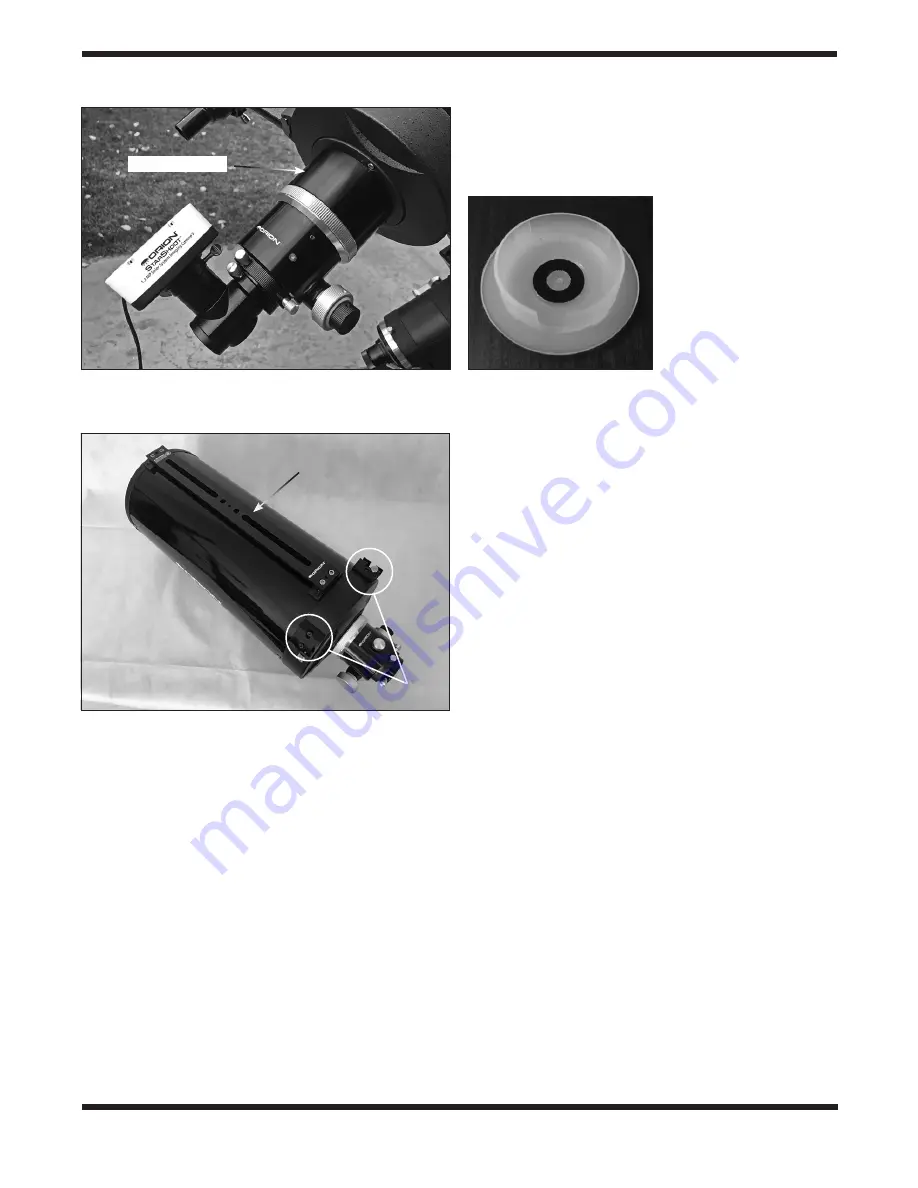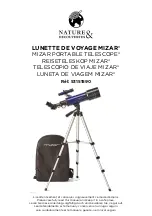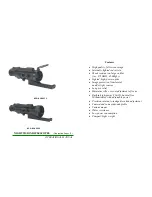
5
Mounting the Telescope
Orion Classical Cassegrains each have a dovetail mounting bar
running along the bottom of the optical tube for rigid attachment
to a compatible equatorial mount saddle plate. The CC6 has a
narrow, V-style bar while the CC8 includes a wide D-plate style
bar. The long length of the dovetail bars makes it easy to bal-
ance the telescope on the declination axis by sliding the scope
forward or back before locking it down.
Cooling the Telescope
Before observing or photographing with your Classical
Cassegrain, you should let it equilibrate to the outdoor tem-
perature for an hour or more. This will reduce thermal air cur-
rents inside the telescope that could soften or blur your images,
whether you’re doing visual observing or astrophotography.
Collimating the Classical
Cassegrain
The optics in your new Classical Cassegrain optical tube have
been aligned at the factory. However, rough handling during
transit may warrant periodic re-adjustments. We have precisely
center marked the secondary mirror with a small adhesive ring
to aid in collimation. This ring does not affect the view through
the telescope, so it should NOT be removed. You will need the
quick-collimation cap
(Figure 7)
that came with your telescope
or (better) a Cheshire eyepiece to check and adjust collimation.
We recommend doing the collimation during daytime. It can be
done indoors or outside.
1. Remove any extension rings and attach the focuser
directly to the optical tube.
2. For indoor collimation, set up your telescope in a well-lit
room with the telescope oriented horizontally, and point it
at a light colored wall. For outdoor collimation, point the
telescope toward the sky but keep the telescope as close
to horizontal as possible.
3. Insert the collimation cap or Cheshire eyepiece into the
focuser via the included 1.25
"
adapter. If using a Cheshire
eyepiece, make sure that the 45° reflecting surface of the
Cheshire is aimed at a bright source of light, like a ceiling
light or a clear sky outdoors.
4. Look through the collimation cap/Cheshire eyepiece. If
using a Cheshire eyepiece you should see a small black
dot and a dark ring within a larger bright circle. The dot is
the hole of your Cheshire eyepiece. The dark ring is the
center mark on the secondary mirror. And the bright circle
is the reflective 45-degree surface of the Cheshire. The
larger black circle outside that is the secondary mirror
holder.
(Figure 8A)
.
If your scope is in good collimation, the black dot will be dead
center in the dark ring, which will in turn be centered in the bright
circle. If that’s the case, no further adjustments to the secondary
mirror will be necessary. The optical axis is denoted by a thin
white circle on the outer edge. You can disregard that for the
time being; it will be covered in the following section.
If the view looks something like
Figure 8B
— with the dot of
the collimation eyepiece NOT centered in the secondary center
ring — you will need to adjust the three collimation setscrews
at the front of the secondary mirror holder
(Figure 9)
. This will
Figure 5.
Reaching focus with a solar system camera in this
configuration requires addition of the 2” extension ring
(or two 1” extension rings).
Figure 6.
The Orion Classical Cassegrains are equipped with two
dovetail finder scope bases. The CC8, shown here, also has a dovetail
bar on top for mounting a guide scope or a second telescope.
Figure 7.
The included
quick-collimation cap aids in
the precise alignment of the
optics. An even better choice
is to purchase a Cheshire
collimating eyepiece.
2” extension ring
Dovetail finder
scope bases
Dovetail bar















